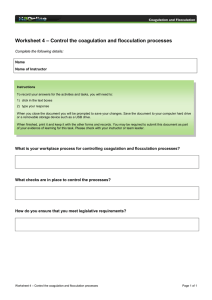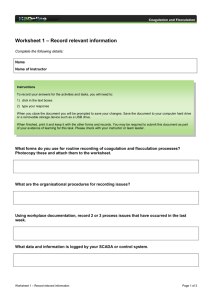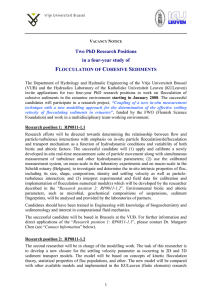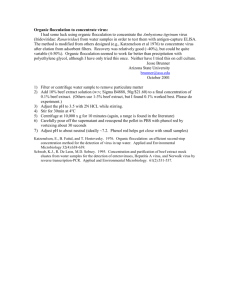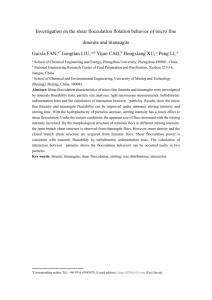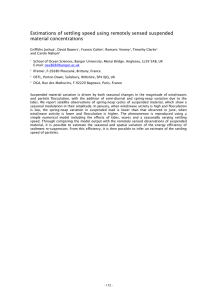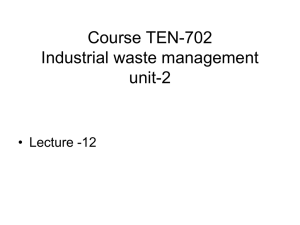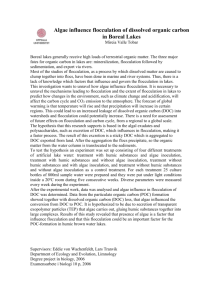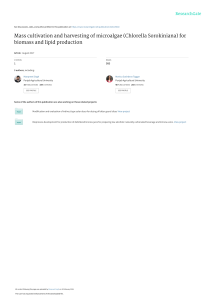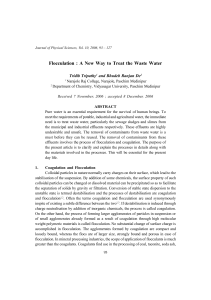PH INDUCED FLOCCULATION: A COST‐EFFICIENT METHOD FOR HARVESTING MICROALGAE
advertisement
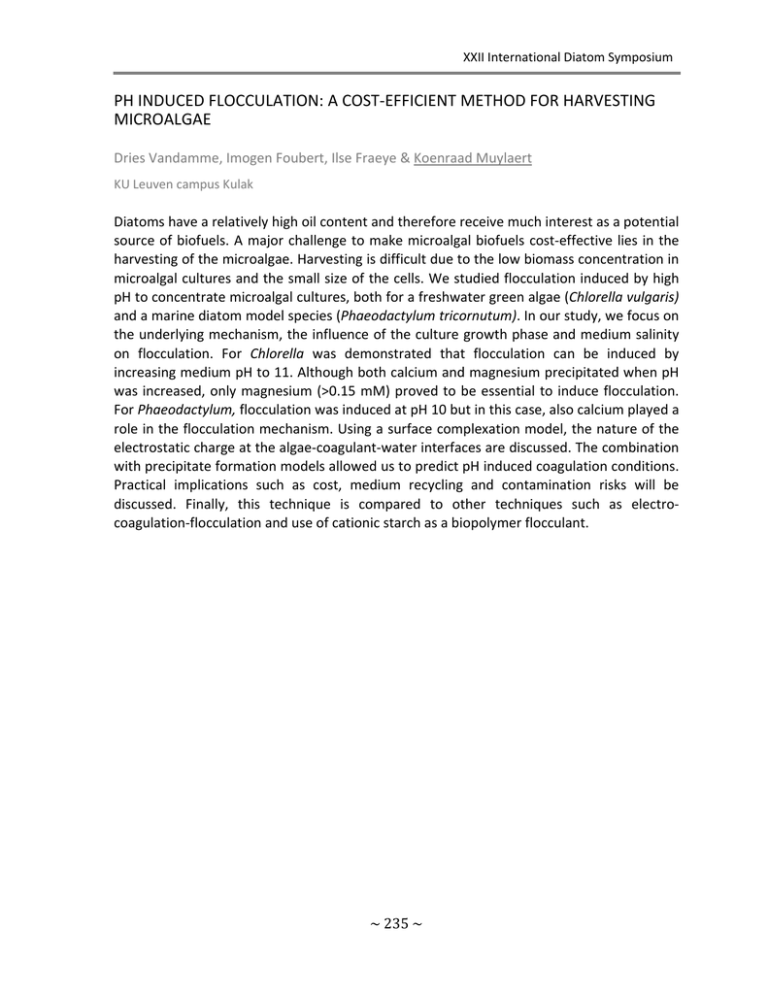
XXII International Diatom Symposium PH INDUCED FLOCCULATION: A COST‐EFFICIENT METHOD FOR HARVESTING MICROALGAE Dries Vandamme, Imogen Foubert, Ilse Fraeye & Koenraad Muylaert KU Leuven campus Kulak Diatoms have a relatively high oil content and therefore receive much interest as a potential source of biofuels. A major challenge to make microalgal biofuels cost‐effective lies in the harvesting of the microalgae. Harvesting is difficult due to the low biomass concentration in microalgal cultures and the small size of the cells. We studied flocculation induced by high pH to concentrate microalgal cultures, both for a freshwater green algae (Chlorella vulgaris) and a marine diatom model species (Phaeodactylum tricornutum). In our study, we focus on the underlying mechanism, the influence of the culture growth phase and medium salinity on flocculation. For Chlorella was demonstrated that flocculation can be induced by increasing medium pH to 11. Although both calcium and magnesium precipitated when pH was increased, only magnesium (>0.15 mM) proved to be essential to induce flocculation. For Phaeodactylum, flocculation was induced at pH 10 but in this case, also calcium played a role in the flocculation mechanism. Using a surface complexation model, the nature of the electrostatic charge at the algae‐coagulant‐water interfaces are discussed. The combination with precipitate formation models allowed us to predict pH induced coagulation conditions. Practical implications such as cost, medium recycling and contamination risks will be discussed. Finally, this technique is compared to other techniques such as electro‐ coagulation‐flocculation and use of cationic starch as a biopolymer flocculant. ~ 235 ~
